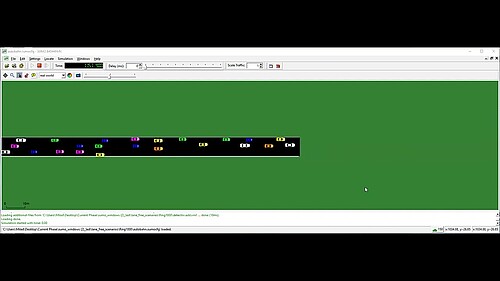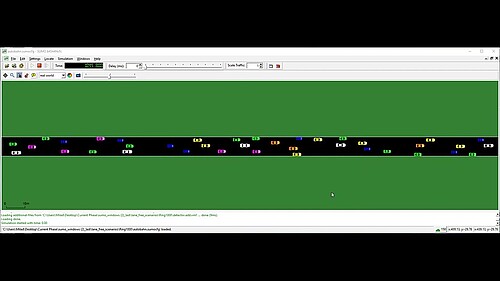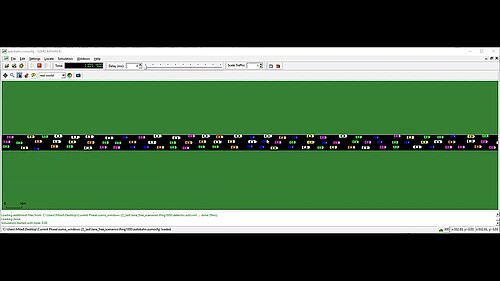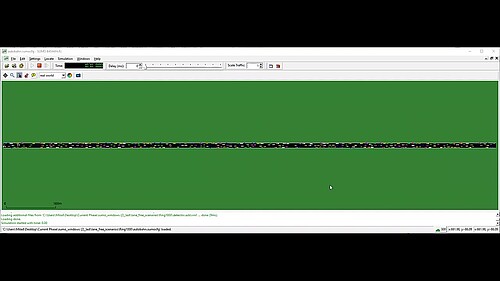Video Playlist 12: Empirical investigation of properties of lane-free automated vehicle traffic
The videos included in this playlist are part of the results discussed in the paper titled "Empirical investigation of properties of lane-free automated vehicle traffic", accepted to IEEE ITSC-2022. This is an enhanced and extended version of the ad-hoc vehicle movement strategy and simulation results presented in the paper titled "Lane-free artificial-fluid concept for vehicular traffic".
The new ad-hoc strategy is applied to all vehicles driving on a 1-km long ring-road at different densities. It is assumed that the ring-road is unfolded for simulation purposes. In each lap, it appears as if vehicles exit the road at 1 km and re-enter the road at 0 km. All the vehicles start from zero speed and try reaching their desired speeds, which range [25, 35] m/s. The vehicle movement strategy is inspired by an adaptive cruise control scheme, albeit with significant modifications to account for lane-free driving, nudging, and respect of road boundaries. The movement strategy relies on real-time information to decide on longitudinal and lateral accelerations. Specifically, an "aura" is defined around each vehicle that depends on the vehicle dimensions, position, and relative speeds with surrounding vehicles. Virtual forces from surrounding vehicles are activated if these vehicles intersect with the corresponding aura. The vehicle movement strategy is employed for traffic simulation on the ring-road, using a recently developed microscopic simulator called TrafficFluid-Sim, which builds on the SUMO simulation infrastructure. The achieved results demonstrate: safe (crash-free) driving at all densities; high traffic flows and capacity; increase of traffic flows and capacity via vehicle nudging; as well as via small road widening.
Vehicle movement at 150 veh/km density (Full nudging and No nudging)
These videos depict the vehicle movement in under-critical density for the full nudging and no nudging cases. Traffic conditions in the nudging and no-nudging cases are similar, as expected based on the Fundamental Diagrams included in the paper. All the vehicles start from zero speed. A single vehicle is tracked by the camera to demonstrate its behavior relative to its surrounding vehicles. As can be seen, the vehicle is moving smoothly and safely along the ring-road. It is visible that, at microscopic level, there are more relative vehicle displacements in the case of nudging; without nudging, relative vehicle distances seem to freeze to a cluster that does not change much over time. This is the main reason for having, in the full nudging case, 8% higher mean speed than no-nudging case, as it may also be deduced from the Fundamental Diagrams included in the paper.


Vehicle movement at 300 veh/km density (Full nudging and No nudging)
These videos depict the vehicle movement in over-critical density with and without nudging. The main purpose of these videos is to demonstrate the effect of nudging at the traffic level. To this end, the videos are captured after steady state traffic conditions have been reached. No crashes and no road departures occur during the entire simulation. It can be observed that, due to high density, the vehicles form a cluster, and relative vehicle movements are small, particularly in the full-nudging case. More importantly, the speed of the vehicles in the full-nudging case is significantly higher than in the no-nudging case, which leads to accordingly higher flows at the same density. The flow for the full nudging case in the steady-state condition is 63% higher than in the no-nudging case.


